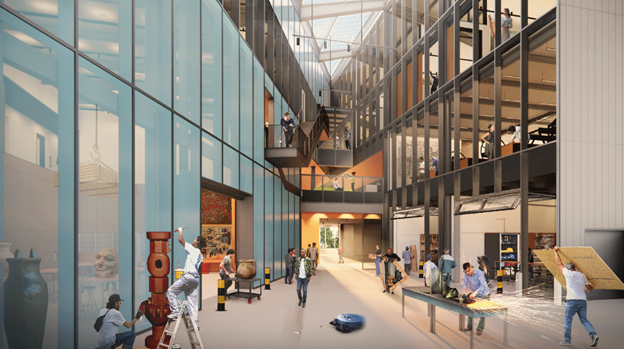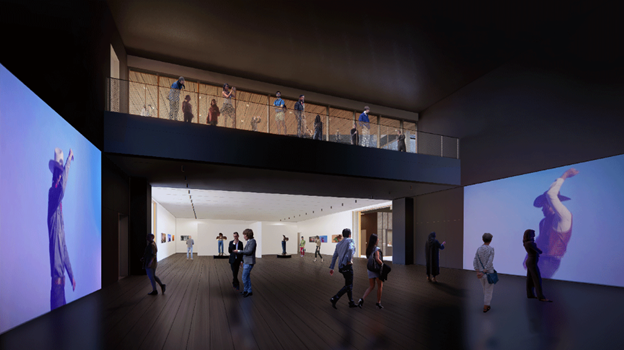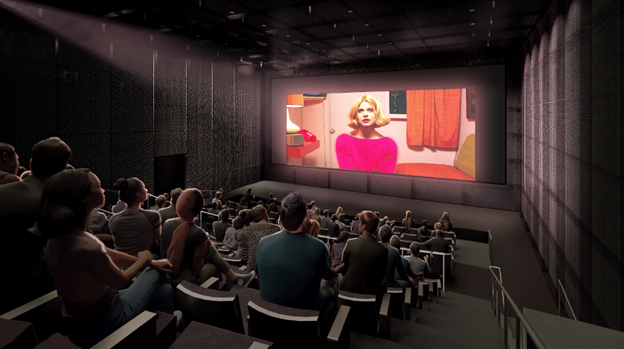
HOUSTON — The Susan and Fayez Sarofim Hall is set to open at Rice University in fall 2025, marking a significant milestone in the university’s commitment to advancing its growing arts program.
“When I joined Rice as dean of engineering several years ago, I recognized the immense importance of Rice’s arts program to advancing our university’s excellence, impact and engagement with the city of Houston,” said Rice President Reginald DesRoches, underscoring Sarofim Hall’s pivotal role in arts education at Rice.
The university’s commitment to the arts is fueled by Dominique and John de Menil. Their legacy, in addition to the generous contribution of Susan and Fayez Sarofim, serve as the cornerstone for the creation of Sarofim Hall.
“It will be a phenomenal building,” said John Sparagana, chair of Rice’s art department. “We’ll all come together, and that cohesion and energy of an art community will flourish.”
Designed by Diller Scofidio + Renfro (DS+R), Sarofim Hall will be a beacon of interdisciplinary collaboration and experimentation. Spanning 83,000 square feet, the dynamic facility is poised to redefine the landscape of arts education at Rice and beyond.
“Rice students are very creative, but they come thinking creative in terms of the science world,” said Kathleen Canning, Rice’s dean of humanities. “They often only begin to discover this other talent, a very much related talent, when they enroll in art courses.”
Charles Renfro, partner at DS+R and lead architect of Sarofim Hall, is an example of that. The 1987 Rice graduate earned degrees in both architecture and art.
“I understand how much the arts at Rice mean to everyone,” Renfro said, adding that he was thrilled to learn about the ways in which the university’s art program is moving forward, including its offerings of performance and multimedia art.
Drawing inspiration from Rice’s rich artistic heritage, Renfro and his team designed a space that will transcend boundaries and ignite the imagination.
“Sarofim Hall will pay tribute to the two Butler buildings built by Dominique de Menil for the art department back in the ’60s: the Art Barn and Media Center,” Renfro said.
This homage to the past will be seamlessly woven into Sarofim Hall’s innovative design, which seeks to unite art faculty and students from diverse disciplines under one roof. The design turns the Butler Building inside out, cleaving open its center with two full-height glass walls effectively dividing it into two parts. These glass partitions, which intersect in the very center of the structure, will create two rain-protected outdoor spaces in which art can be shown and made.
Renfro envisioned Sarofim Hall not merely as a structure but as a tool that will foster collaboration across artistic mediums.
Source: Rice University










